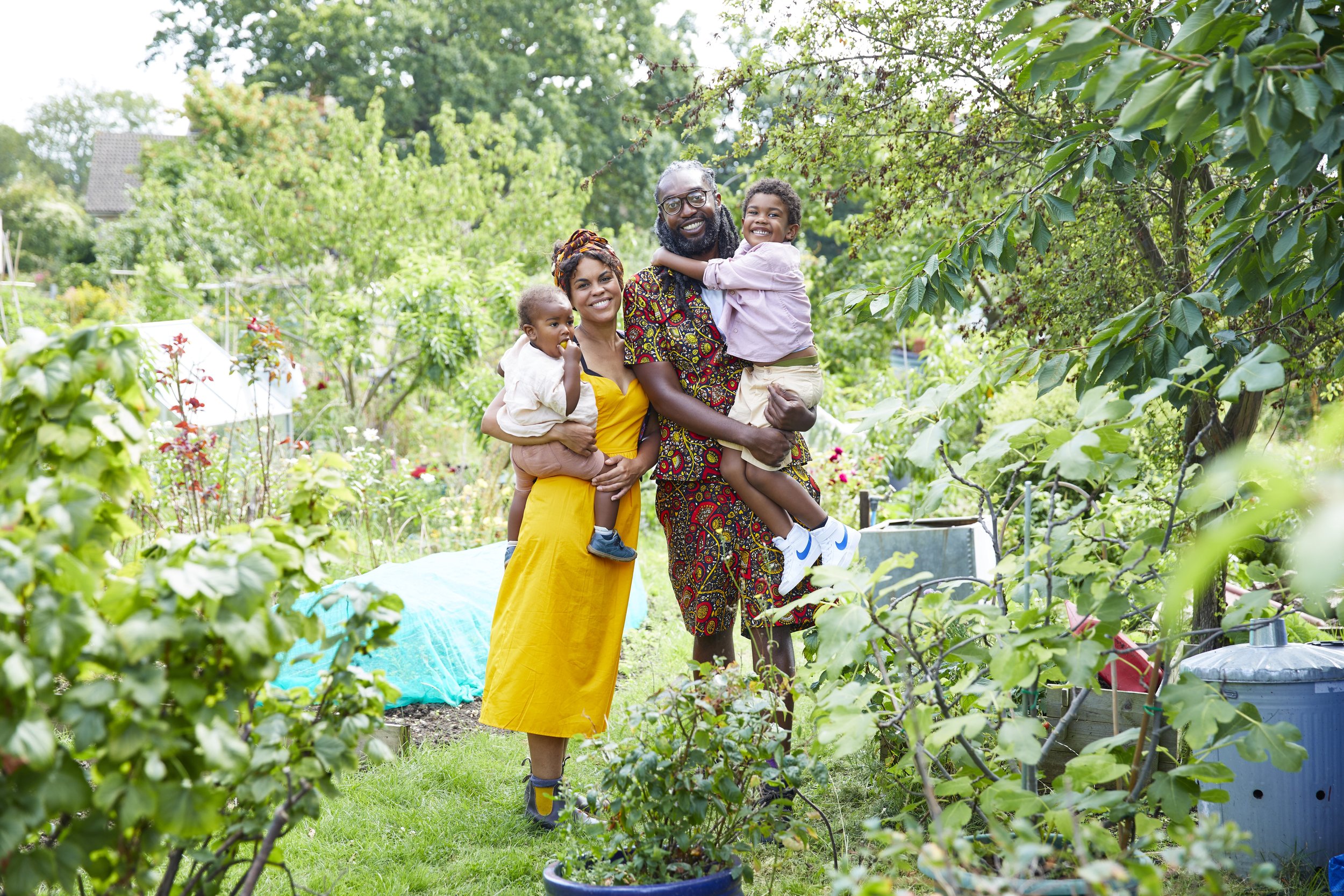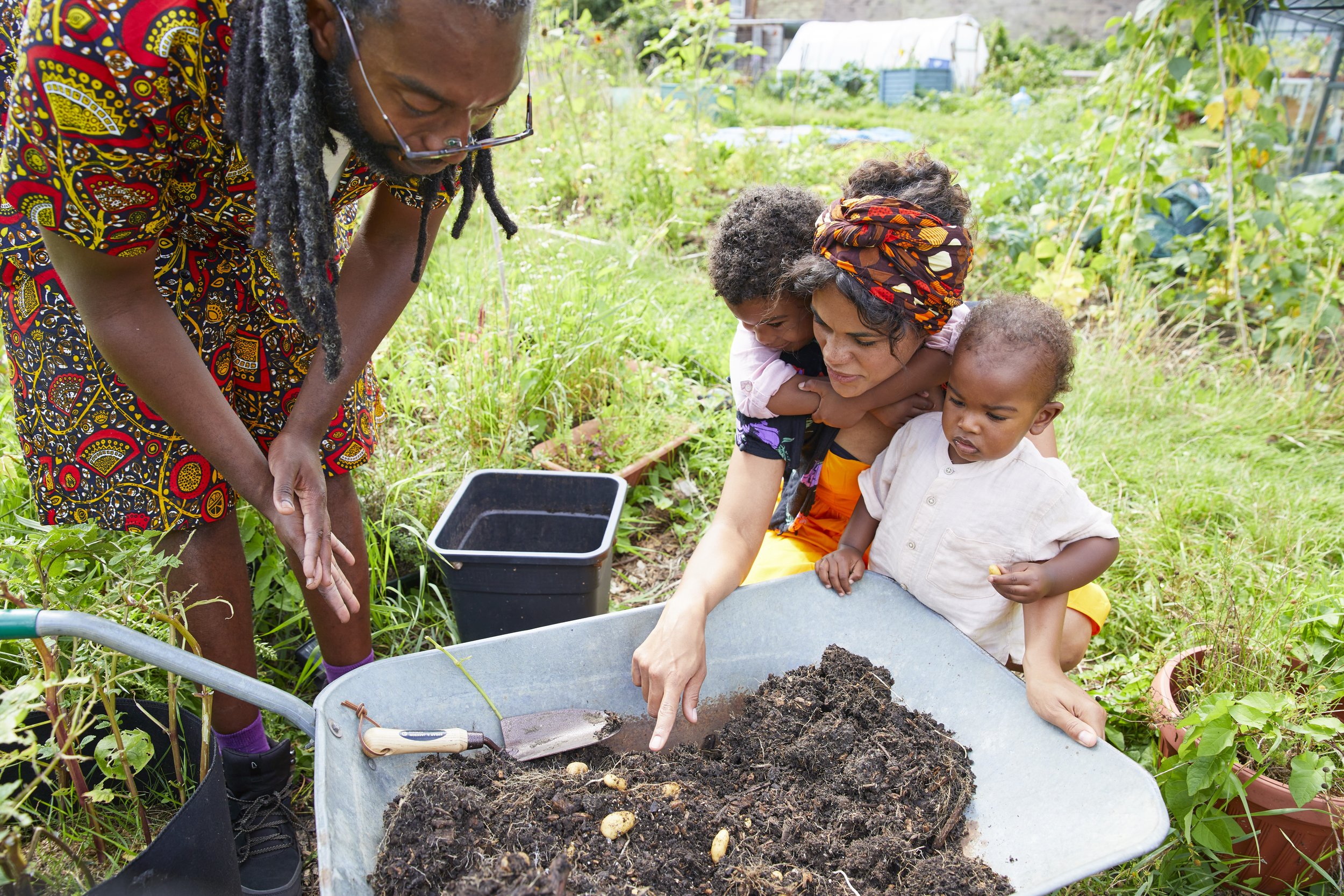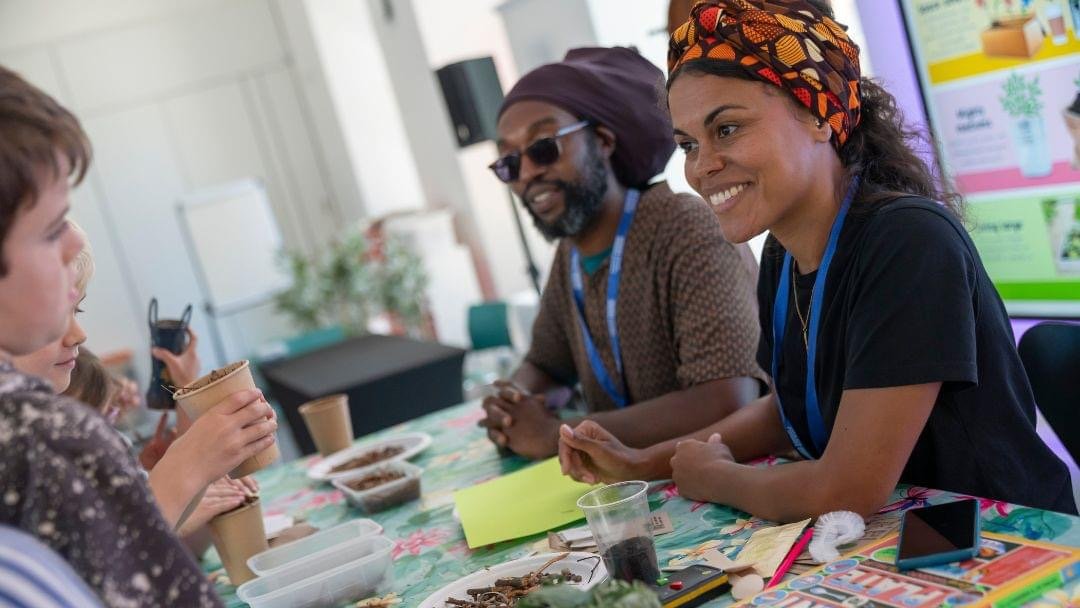Electric Future Foods - Growth affects flavour
Ella Phillips and Darryl Gadzekpo are the co-founders of Electric Future Foods, a collaboration of their many passions and skill sets. Through Electric Future Foods, Ella and Darryl provide multi-sensory offerings to their community, hosting Caribbean inspired supper clubs, delivering workshops and most recently, releasing a cookbook.
Passionate plant-based cooks, Ella and Darryl also now have an urban growing space where they grow veg for their supper clubs, host community volunteer days and experiment with growing healthy produce for their family and community.
We spoke with Darryl and Ella to hear how their relationship with food and cooking has shifted since engaging in the growing of their food.
How food is grown affects the flavour
“We wanted to showcase the vegetable, and you can't do that unless it tastes good. We found amazing suppliers, but part of the motivation was, if we know exactly what has happened to our food, creating the compost, nurturing the soil, saving the seeds each year, how can we exponentially improve the flavour of the food we’re making? And then we have to do less to it to make it taste good.”
Darryl and Ella experiment with growing and learning about plants otherwise hard to acquire, even from your local farmers market. There might be something about these ingredients that doesn’t quite fit into the economic system, the fruits might be too soft to ship, or the leaves might wilt too quickly, but if you’re growing them for your own consumption, or for a quick plant to plate experience, it can really expand what you eat as well.
How growing food shifts your cooking practises
Since engaging with the production of their ingredients, Darryl and Ella’s approach to cooking has shifted completely. “It means we are cooking more seasonally, and even our bodies are shifting so that we’re craving what’s in season. We’re synchronising more with nature and I would say that we’re planning what we cook based around what’s available rather than deciding what we want to cook and finding those ingredients”.
Visit your primary producer’s land
E - “There might be something that is growing in abundance, but because the chef doesn’t know about it, they aren’t asking for it, but once they see it and taste it, they might ask to take it all. Something that would be going to waste could then become this amazing ingredient”.
D - “For example, nettles grow in abundance in this country. Imagine, at every fish shop, we could have a nettle condiment available. Talking about the health benefits of consuming those ingredients can really help with adoption, as long as it tastes good!”
Maintaining cultural diversity in a UK based diet
Whilst it’s great if we can source our ingredients as locally and seasonally as possible, it’s important we don’t lose cultural diversity in our sector. Darryl was born in Trinidad and half of Ella’s family are based in Dominica, with the duo finding ways to incorporate their cultural heritage into a local, seasonal, UK based menu.
“We’re looking into how we can combine something that might come from further afield like a plantain, with something that’s grown hyper locally, to balance out the food miles, whilst still maintaining that connection to home. With localising the food system, we can overlook a lot of people’s cultural heritage and it becomes a racist policy by proxy, because it’s just like, we don’t care about what you grew up with, it’s wrong now, and that’s not really addressed. We’re presenting solutions to that.”
Share the responsibility of food production with your growers
E - “If there’s anything I’ve learnt over the last few years it’s that it’s all about personal relationships, it’s about that network. If chefs have more of a relationship with their growers, there’s going to be a symbiotic relationship between the two of them. The chef is going to learn a little bit about what goes into the growing, and hopefully get excited about it and share ideas that the grower then might want to grow, and the grower can explain, well actually it’s really hard to grow that at this time of year. When there are crop failures, let's actually get excited and get creative and see it as a challenge we can solve rather than a failure. It could be an opportunity for something exciting to be discovered.
D - “Once the gap between chefs and growers is closed there’s a reduction in things like food waste, because the chef appreciates every gram of food they receive, when it comes from a grower who you know and respect”.
The importance of accessibility in the farm to table movement
“There’s a big gap in the business model of farm to table venues. We need to make it more accessible. The people who need it most are those who can’t afford it. Every cafe, restaurant, community kitchen, fast-food chain can shift their sourcing. Begin by starting conversations. Even if it’s just a small step, can you source your herbs from a local grower? It’s important this doesn’t become an elitist movement, of only wealthy people eating well. It’s always been that. How do we flip that system and actually show that this way of farming and growing food can be very productive and self-sustaining, and that should result in lower prices.”
Include your customers in the growing journey
“It’s going to take chefs and growers, but also, educators and teachers to work together. We notice such a big change in the young people who come onto the plot, even in the space of just a few hours. We need to meet people where they are, and to keep that going. When chefs are excited about where their food comes from they’ll pass that on through the food they cook and the narratives they’re telling through the meals that they design, it’s a multiplier effect.”
Connect your customers and community to their food
“We do plot days once or twice a month. We make it clear that it’s open for people to join. We always feed people when they come to the plot. We often make Doubles, which is a Trini street food of chickpea curry and flat bread. It’s about joining and learning, but also getting fed. We’ll listen to some music too. It’s always a nice experience. Even if you want to come and not do anything, just watch, that’s also welcome. It’s meeting people where they are”.
“Our idea of opening up our plot regularly is to transform what people want to eat as well as their relationship to food, understanding where it comes from, maybe to shop slightly differently, maybe grow a bit, and to just understand their food in a more holistic way. We’re thinking from the seed to the soil, what has it been grown in, how far has it come, the seasonality of food. Hopefully if we can transform the way people shop, consume and eat, that also puts a bit of pressure on places to change, if consumers can ask the right question. It’s the multiplier effect of small actions”





